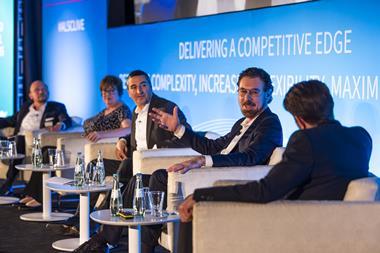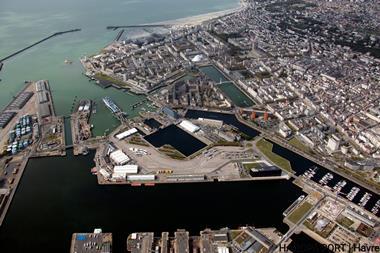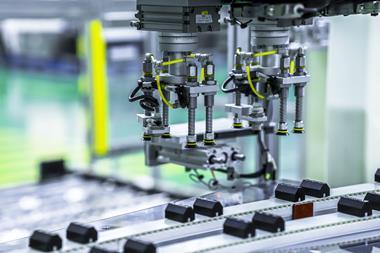Brazil has passed legislation to loosen terminal concession rules and encourage more private investment. However, it looks unlikely to be plain sailing ahead
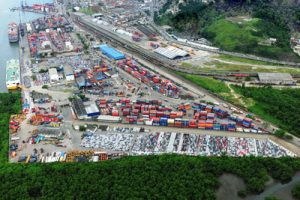
The automotive sector is a major user of the country’s ports for both material flows and vehicle trade. According to the Ports Secretariat of the Presidency (SEP), the government entity responsible for handling its port-licensing plan, Brazil exported 475,741 cars last year, up 26.5% on 2012 and valued at a record $5.5 billion, which was 36% higher.
Of this total, 348,453 vehicles, or the equivalent of $4 billion, passed through Brazilian ports. Santos handled 53% of exports, Paranaguá 19%, Aratu 14%, São Sebastião 7% and Rio de Janeiro 6%. Most of the rest moved by road.
Alfredo Leggero, director of manufacturing at Fiat Chrysler Latin America, says the main challenges come from excessive red tape and infrastructure deficiencies. “Saturated ports, a lack of space, and inadequate product storage in the yards are key concerns,” he says.
Gerson Foratto, director of Santos port terminal Deicmar, adds that the biggest challenge in the past decade has been to show the Brazilian government that ro-ro shipping and handling is strategic for Brazil, especially for Santos port. With about 65% of Brazilian vehicle production concentrated in São Paulo and Minas Gerais states, as well as 50% of vehicle sales, the sector requires a high level of compatible port infrastructure, he argues.
Vinicius Falcao, Ceva’s director of business development for South America, adds that public ports are not focused on productivity. Few connect to rail or roads designed to support cargo and he believes it is imperative to slash bureaucracy and improve the infrastructure beyond port boundaries.
New wave of legislation
Brazil’s ports have not been helped by disparate and sparse legislation over the past 20 years. In 1993, the Brazilian congress passed a law to modernise the nation’s ports, allowing the privatisation of port operations, as well as the leasing and construction of private terminals. Various facilities in public-sector ports were also transferred to private hands, such as Santos Brasil, while new private terminals were built such as Embraport Portonave and Itapoa.
However, the port law failed to establish favourable conditions that could cope with the pace of Brazil’s fast-expanding economy. The law was revoked in 2012 as the government and business leaders grappled with ways to avoid bottlenecks and improve the country’s ageing cargo gateways.
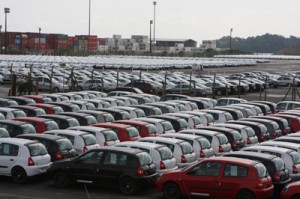
The bill is complex, wide sweeping and equally controversial. Brazil’s president, Dilma Rousseff, has vetoed some aspects of it, while many other parts are caught in legislative snags. Port operators are concerned about limits on profits, while cargo owners worry about a lack of transparency on fees and rate limits. Ro-ro providers and users also fear that the legislation could further squeeze the already limited space for their cargo at ports as investors focus on containers.
There are some who doubt that the legislation will ever be implemented, at least fully. However, many in the automotive logistics industry believe that the law could lead to significant change, with Fiat’s Leggero calling it a “regulatory landmark”.
According to SEP, the legislation intends to make running ports cheaper and more efficient. Rather than focusing on individual ports, the law aims to boost investment and infrastructure improvements across the country. Another aim is to spur more private investment in infrastructure. Rodrigo Palmieri, integrated supply chain director for Delphi South America, says that if the measures announced last year by the federal government materialise, the country’s ports could see investment of at least R$31 billion ($13.2 billion) by 2015.
Under the new legislation, the main aim for concessions is greater efficiency with lower tariffs and an improved flow of cargo. According to Leggero, if the law is applied it will encourage competition among ports and terminals, attracting investments from private initiatives. “New terminals, the modernisation of equipment and better qualified labour are necessary to revitalise our port system,” he says.
Brazil’s government is taking a hands-on approach to spearhead reforms, revealing some 50 new port concessions. SEP was established to centralise planning and prepare the sector’s licensing plan, while the National Agency for Waterway Transportation (Antaq) was remodelled to oversee activities such as bidding procedures and contractual performance across all ports.
To drive the process forward, Patricia Nakahara and Ana Claudia Beppu, partners specialising in the new law at legal firm Mundie e Advogados, explain that the bidding documents are currently undergoing a public consultation process. They say that the government is under pressure to carry out the consultation before this summer when the FIFA World Cup will start and ahead of the presidential election in October.
Nakahara explains that some of the changes are intended to make the bidding process more transparent and orientated for long-term investment. The initial granting licence requires a public notice or call for expression of interest to attract parties to operate or build the port facilities. When there is more than one interested party, a bidding process takes place for contracts of up to 25 years. These can be renewed, at the discretion of SEP, based on available opportunities, if the holder continues the port’s activities and carries out the necessary investments to expand and modernise the facilities.
Nakahara adds that while the former bidding process was based on the value offered to win the bid, now various factors will be considered. These include handling capacity, offering the lowest rates and/or delivering the fastest handling times for cargo, along with any other criteria that might be added in specific cases, she says.
 "New terminals, the modernisation of equipment, and better qualified labour are necessary to revitalise our port system" - Alfredo Leggero, Fiat Chrysler Latin America
"New terminals, the modernisation of equipment, and better qualified labour are necessary to revitalise our port system" - Alfredo Leggero, Fiat Chrysler Latin AmericaBeppu says another key alteration is that the licensee of private terminals can now select whether to work with its own cargo as before, or handle both its own goods as well as the cargo of third parties. This overturns previous rules restricting a licensee to handle predominantly its own cargo. As a result, various existing concession holders see this change as a potential threat to their current business. New terminals can provide services to various companies instead of just sticking to a certain type of cargo, she explains.
Such changes are being met with resistance, particularly from incumbent terminal operators. Beppu says these players argue that the old rules as just being replaced by new, more ambiguous ones. Many are fighting tooth-and-nail against the proposals, lodging a multitude of legal challenges, she adds. For example, about 50 of the terminals that could be auctioned off in 2014 may stall as their current operators go to court to extend their expiring concessions.
The port subject also recently became fodder for political debate after Rousseff announced that the government – through Brazil’s national development bank BNDES – would invest millions of dollars in a Cuban port project. Opposition parties have lambasted the president for pumping money into an overseas project while Brazil’s own ports languish. The issue may even cause ripples in the country’s upcoming regional and national electoral campaigning.
Navigating obstacles
According to Deicmar’s Foratto, the president chose the most difficult path by overturning existing regulations and establishing a new framework with “huge conceptual flaws”. For instance, the plan to start leasing public port terminals to private companies last year has already faced objections from the federal audit court.
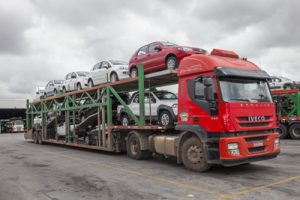
Foratto points to other concerns about the legislation, including the fact that there is a maximum income allowed; reductions in the operating capacity at some terminals; unnecessary investment requirements; disputes related to the definition of terminal boundaries and areas; the transfer of unknown environmental liabilities to concession winners; and a lack of technical expertise to ensure certainty in the bidding process.
In the view of Flavio Batista, vice-president for Latin America at Wallenius Wilhelmsen Logistics, one of the biggest current problems is the lack of ro-ro terminals in Brazil. “This sector is growing rapidly but it has not been followed by infrastructure developments,” he says. “The container terminals are much more profitable than ro-ro terminals, therefore you don’t see many such terminals being developed. The new concession plan will certainly help, but not a great deal as you don’t see many ro-ro terminals on the list.”
Batista says it’s a good thing that the winner will need to present the most competitive price during the bids. However, as the government plans to cap potential earnings, investors are likely to limit the amount they are willing to spend. Moreover, the government is still struggling to develop a document that covers all the elements for a port concession, making it competitive at the same time as interesting for the investment companies or terminal operators, he says.
Ceva Logistics’ director of ocean freight for Latin America, Lauro Vieira warns that the government is tackling only one side of the problem. “Through the privatisation of ports, airports, highways and railway, the government is allowing private initiatives to modernise the infrastructure network,” he says, “but this does not address the public sector bureaucracy, inefficient laws and procedures, and heavy taxes.
“Tax reform and changes in the rules are key elements to help reduce costs involved in the supply chain,” he says.
From business planning, economic and logistical points of view, 2014 could end up being a very difficult year in Brazil, according to Deicmar’s Gerson Foratto. The country is set to nearly “stop” three times: first for annual Carnival festivities in March, then for the FIFA World Cup during June and July, and finally during the presidential and regional elections in October. All these events will impact the Brazilian economy, as well as investments in the port sector, he says.
Foratto emphasises that Brazil’s economic conditions are uncertain. Consumption has been growing well above the country’s headline GDP growth, which has led to high imports. He believes that imports will remain elevated this year and that exports may suffer a retraction because of trouble at Brazil’s trading partners, such as Argentina, which announced import restrictions this year, partly in response to a currency crisis.

Ceva’s Vinicius Falcao warns that current volumes, especially when combined with the peak of the grain harvest, already generate burdensome constraints at ports. Given that public ports are not focused on productivity and have poor multimodal transport links, the easing economy can help to avoid bottlenecks in the ports, he says.
Falcao says it will be imperative to reduce bureaucracy at ports, both in handling goods and in investing in long-term infrastructure developments. There are not many companies, after all, who will be hoping for slower economic growth as a means to prevent major disruption at ports.
Manufacturers look north and south
Fiat, for one, is interested in seeing investment and development in Brazil’s port network well beyond the main industrial centres the south. Along with its huge plant in Betim, in Minas Gerais, for example, the carmaker is building a second industrial unit in Pernambuco state, in the northeast of Brazil. The plant will be the centre of an integrated vehicle complex that includes a supplier park, training centre, R&D centre and a test track. The factory will begin its operation in the first quarter of next year, with an annual production of 250,000 vehicles.
Leggero explains that when selecting a port, Fiat considers factors such as operational quality and cost, distance, and availability of mooring and yards for stocking. Pernambuco’s nearby port of Suape offers the complete range of infrastructure to meet Fiat’s import and export demands. He says Suape should be established as a hub for products originating from North America and Europe to the entire Latin America.
 "The government is allowing private initiatives to modernise the infrastructure network, but this does not address the public sector bureaucracy, inefficient laws and procedures, and heavy taxes"
"The government is allowing private initiatives to modernise the infrastructure network, but this does not address the public sector bureaucracy, inefficient laws and procedures, and heavy taxes"- Lauro Vieira, Ceva Logistics
The government should also work to modernise and make more flexible the restrictions that are still exercised along the coast, Leggero adds. The legislation, for instance, demands that ships operate under the Brazilian flag; a requirement that no ro-ro ships currently meet. He also feels that the legislation does not do enough to foster better integration of water, road and railway logistics.
Leggero identifies other potential issues in the legislation, such as non-definition of a ceiling for tariffs, non-guarantees of minimum area for ro-ro vehicles and ships, as well as the risk of the bidding process resulting in the concentration of concession in a few companies.
Delphi’s Palmieri would welcome the opening of more port terminals, which he hopes would lead to faster and more flexible loading and unloading of vessels as well as lower operational costs. On the other hand, a negative element is the uncertainty over whether operators will actually reduce rates. It will still be necessary to regulate closely the new law and inspect the new laws by Antaq, he warns.
“We hope that given the continuation of announced investments, which can lead to more efficient and less bureaucratic operations, this should make Brazil more competitive overall,” Palmieri concludes.


















